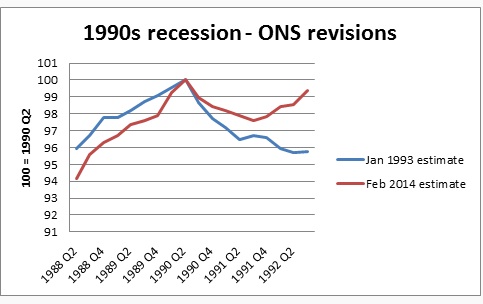During the mid-late 1970s era of high inflation, I was a teenager growing up in a household with two parents who worked, but not in jobs with unions that could deliver inflation-beating wage increases, and whose small savings were held in a building society account. Rising food and energy prices made things tough. Marked as we all our by personal experience, I’ve ever since believed inflation to be harmful for people on relatively low incomes, tending to mean declining real earnings and negative returns on savings.
The early section of Piketty’s [amazon_link id=”067443000X” target=”_blank” ]Capital in the 21st Century[/amazon_link] has given me pause for thought. He contrasts the Victorian and Edwardian era of stable prices and rentier wealth (in the form of land and then government bonds) with the post-1920s era of declining importance in inherited wealth. He writes:
“Capital is never quiet: it is always risk-oriented and entrepreneurial, at least at its inception, yet it always tends to transform itself into rents as it accumulates in large enough amounts.” (p115-116)
The point of accumulation is to build up enough to stop working, whether at the scale of a character in an Austen or [amazon_link id=”0140440178″ target=”_blank” ]Balzac novel[/amazon_link], or at the scale of a colonial power like France or Britain.
What changed with the onset of the violent 20th century was inflation. In the 19th century, when governments built up war debts, rentier classes bought the government bonds and could live securely on the repayments. “In the 20th century, a totally different view of public debt emerged, based on the conviction that debt could serve as an instrument of policy aimed at raising public spending and redistributing wealth for the benefit of the least well-off members of society. The difference between these two views is fairly simple: in the 19th century, lenders were handsomely reimbursed, thereby increasing private wealth; in the 20th century, debt was drowned by inflation and repaid with money of decreasing value.” (p132)
France inflated far more dramatically than the UK in the period 1913-1950, and French public debt dropped from 80% to 30% of national income over that period. The UK had a colossal 200% of GDP debt in 1950, but made up for it with inflation in the 1950s and especially the 1970s. In both cases, though, inflation was the means of expropriating the rentier classes and, Piketty argues, one of the key reasons the 20th century bucked the tendency of capitalism to create and enhance entrenched wealth inequality. So this is obviously a different perspective on inflation from my teenage perception.
I was chatting about this to Professor Dieter Helm, who chairs the UK’s Natural Capital Committee and is writing a book about valuing natural capital (which will be a must-read when it’s out). He pointed out that the shift towards an inflationary regime coincided with a generational rebellion against the Victorian emphasis on thrift and investment for the future, in favour of consumption and the present. In Britain, the Bloomsbury Group – including Keynes – exemplified this; see for example Michael Holroyd’s tome on [amazon_link id=”0099332914″ target=”_blank” ]Lytton Strachey[/amazon_link].
[amazon_image id=”1845951832″ link=”true” target=”_blank” size=”medium” ]Lytton Strachey: The New Biography[/amazon_image]
This all makes one wonder about the next few decades – I’d bet on a return to inflation and expropriation of the bond-holding classes (pensioners?), even though the pressing concern is deflation. But this is a bet, not a forecast. Besides, the future the Victorians built is the one we’re still living off, the infrastructure and institutions. Anybody who cares about sustainability (in its broadest sense) must surely be thinking in terms of tilting the balance away from consumption and towards investment. Towards capital, in fact, which makes its distribution all the more important.

